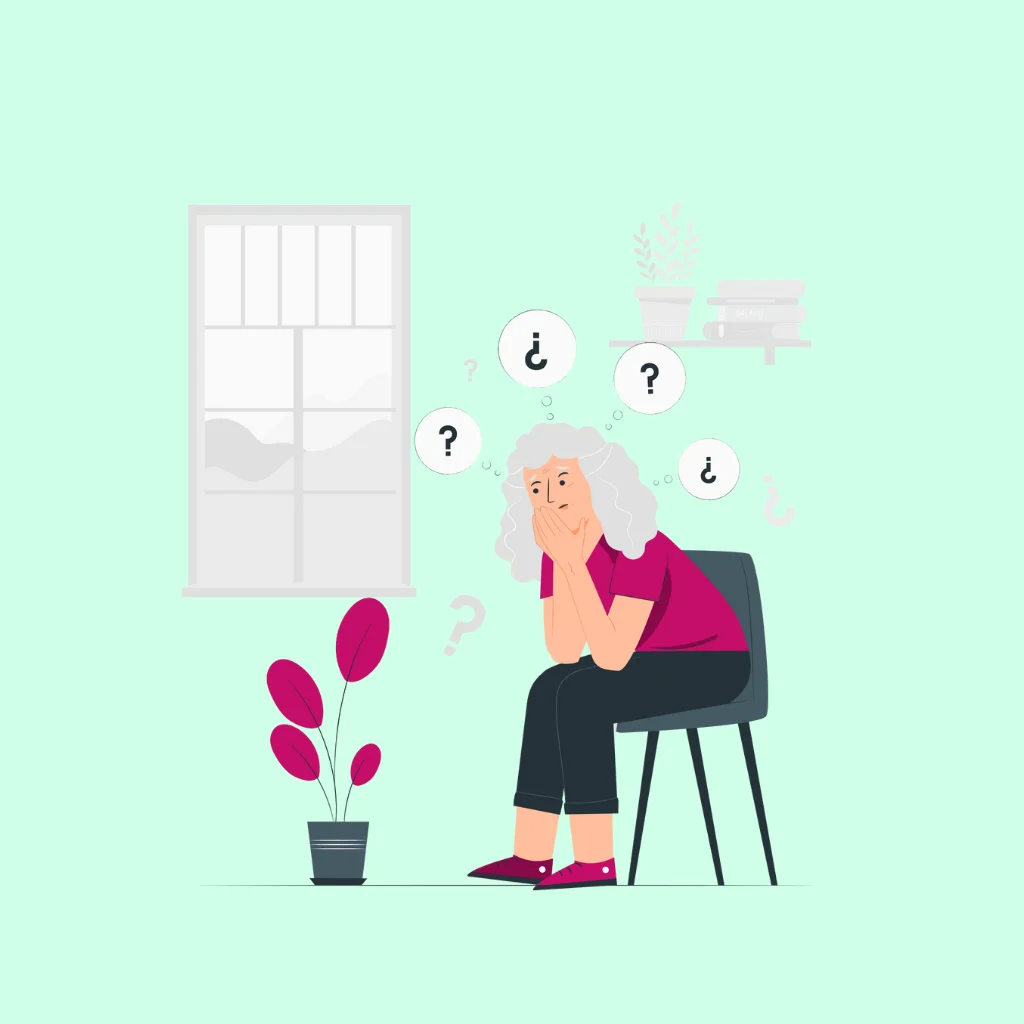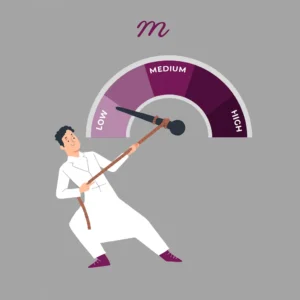The Montgomery-Åsberg Depression Rating Scale (MADRS) is a widely used clinician-administered tool for assessing the severity of depression. Developed in 1979 by Stuart Montgomery and Marie Åsberg, the scale was designed to be more sensitive to changes in depressive symptoms than earlier instruments, such as the Hamilton Depression Rating Scale (HDRS).
Purpose and Significance of the Montgomery-Åsberg Depression Rating Scale
The MADRS forms an important instrument in clinical and research contexts: assessing the level of severity in depression, measuring changes that have occurred during treatment, or describing the progress or regression resulting from treatment interventions. It especially allows monitoring the course of a patient’s response to antidepressant medication in a more standardized fashion for mood disorders. Because of its emphasis on the core symptoms of depression, it finds wide application in psychiatric assessments, pharmaceutical trials, and treatment planning. Clinicians appreciate that it is able to detect even subtle changes in the severity of depression; thus, it is reliable and widely accepted in psychiatry (Paketci, 2021).
Who is MADRS Meant For
The Montgomery-Åsberg Depression Rating Scale is designed for use by clinicians, including psychiatrists, psychologists, and clinical researchers. It most often finds its application in a hospital setup, outpatient mental health clinics, and pharmaceutical trials. It is especially applicable in conditions involving Major Depressive Disorder but may also be applied in bipolar depression and other mood disorders (Geijer, Baigi, & Aiff, 2021).
Structure and Scoring
MADRS consists of 10 items , each rated on a 0-6 scale , yielding a total score ranging from 0 to 60 . The higher the score, the more severe the depression. The 10 items include:
1. Apparent Sadness – Observed facial expression and posture indicating sadness.
2. Reported Sadness – Subjective feelings of sadness described by the patient.
3. Inner Tension – Feelings of distress, worry, or irritability.
4. Reduced Sleep – Difficulty falling asleep or maintaining sleep.
5. Reduced Appetite – Decrease in food intake and interest in eating.
6. Concentration Difficulties – Impairment in focus and decision-making.
7. Lassitude – Apathy, fatigue, and lack of motivation.
8. Inability to Feel – Emotional numbness or reduced ability to experience pleasure.
9. Pessimistic Thoughts – Feelings of hopelessness or negative expectations about the future.
10. Suicidal Thoughts – Presence of suicidal ideation or self-harm tendencies.
Scoring Interpretation
- 0-6: No or minimal depression
- 7-19: Mild depression
- 20-34: Moderate depression
- 35-60: Severe depression
Evidence-Based Validation
The Montgomery-Åsberg Depression Rating Scale has been extensively validated in clinical research and is considered an evidence-based tool for assessing depression. It has shown very high internal consistency, strong inter-rater reliabilities, and excellent sensitivity to treatment effects. It is widely being used in many clinical trials regarding the efficacy testing of antidepressants, and their scores correlate fairly well with those from other standardized depression scales: the Hamilton Rating Scale for Depression and Beck Depression Inventory (Vestin et al., 2023).
Advantages of MADRS
Thereafter, MADRS gained a great reputation for highly sensitivity to variation, especially related to depressive symptoms. It follows then that a time course treatment is measured or calculated. Attention, in general, is taken out on major mood symptoms but not on the somatic symptom since some have connections with multiple medical diagnoses. The scale is moderately quick to administer, taking about 10-15 minutes, and it’s very reliable across different clinicians when those are well trained. Its scientific validation and wide usage in psychiatric research and clinical practice further consolidate it as one of the widely accepted measures for the severity of depression (Borentain et al., 2022).
Limitations and Criticism
Despite the advantages, MADRS will always be a subject of variability in scoring by clinicians, impacting its consistency across assessors. It does not cover atypical depression symptoms comprehensively, such as hypersomnia, increased appetite, or leaden paralysis. The scale’s emphasis on mood symptoms can also lead to an underestimation of somatic symptoms common in depression. Besides that, MADRS does not measure directly the functional impairments caused by depression in daily life, and since it is not a self-report tool, its administration is by a trained clinician, which further limits its availability for routine primary care (Capodilupo et al., 2024).
Uses of MADRS in Clinical Research and Practice
- Clinical Trials: To evaluate the efficacy of antidepressants.
- Routine Psychiatric Assessments: To gauge treatment response in patients with Major Depressive Disorder (MDD).
- Neuroscientific Research: Studies on depression biomarkers often include MADRS scores.
- Telemedicine & Digital Psychiatry: Modified versions have been used in remote psychiatric assessments.
Using the MADRS – Example
Dr. Jasmine is a psychiatrist treating a patient with MDD and prescribes a new antidepressant to her patient, Peter. To assess if the medication is effective, Dr. Jasmine administers the MADRS before starting the treatment to establish a baseline score. After 4 weeks, Peter comes back for a follow-up appointment. Dr. Jasmine administers the MADRS again and notices that Peter’s score has decreased from 35 (severe depression) to 25 (moderate depression). This is a clinically significant reduction in symptoms and suggests that the new treatment is working. This helps Dr. Jasmine determine next steps in treatment planning and ensures that treatment decisions are evidence-based and measurable over time.
Comparison with Other Depression Scales
By comparison with HDRS and PHQ-9, MADRS focuses more on core depressive symptoms and is less influenced by somatic symptoms. In contrast, the HDRS has a longer list of physical symptoms, including weight changes and gastrointestinal complaints, and can be especially useful in cases with co-occurring medical conditions. On the other hand, PHQ-9 is a self-reported measure that is generally used for screening purposes in primary care settings. Whereas in psychiatric research and clinical trials, MADRS is preferred because it shows greater sensitivity to changes in symptom severity (Hudgens, 2021).
The MADRS is a very useful and widely used tool in the investigation of the intensity of depression, but especially in clinical research. Its focus on core mood symptoms, sensitivity to change, and ease of administration make it an essential instrument in psychiatric evaluations. It is an evidence-based tool that has been widely validated in clinical trials and psychiatric studies. However, it is to be used with other assessment tools and clinical judgments if one is to get a proper understanding of a patient’s condition on depression. Future research may further refine MADRS by incorporating digital applications and machine learning techniques for more objective assessments.
Why other mental health professionals love Mentalyc

“It improves the quality of my work as I review my sessions … I bring a sense of continuity from session to session because of the really good summary and progress notes that Mentalyc gives me.”
Licensed Marriage and Family Therapist

“It helps align the note and the plan for moving forward with sessions … it’s been a really good aid in giving me direction.”
LPC

“I go back and can read the notes, and it really helps me for the next session … it has made me a much better counselor.”
Licensed Professional Counselor

“I benefit tremendously every time I wrap up a session and then a few minutes later, I have this AI note … it makes me a better clinician in a variety of ways.”







